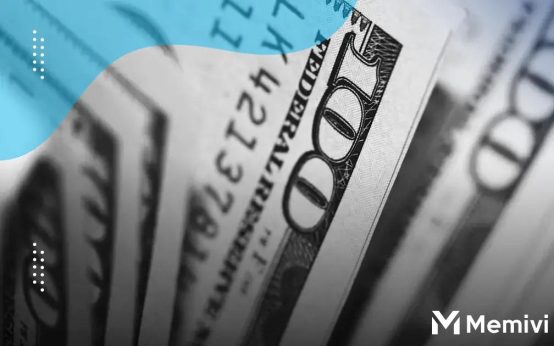
High interest rates on debt can be overwhelming, but understanding how to navigate them effectively is crucial for financial stability. In this guide, we’ll explore practical strategies such as understanding the impact of high rates, developing effective debt management techniques, considering alternatives for relief, and planning for the future to lessen their burden.
Understanding the Impact of High Interest Rates
High interest rates can significantly affect your debt repayment strategy. When interest rates rise, the cost of borrowing money increases, which means monthly payments on loans could become higher. This often leads to a larger portion of payments going towards interest rather than the principal amount, prolonging the time it takes to pay off the debt. Understanding how these rates work is crucial for effective debt management.
Interest rate increases can also have a broader impact. They can lead to reduced disposable income as more money is siphoned off to service debt.
Effects on Credit Card Debt
When credit card rates rise, carrying a balance becomes more expensive, increasing the financial burden on individuals.
Awareness of these changes can inform better financial decisions. By monitoring the economic environment and maintaining good credit scores, individuals can better position themselves to seek lower rates if possible. Additionally, it’s worth considering refinancing options or negotiating with creditors for better terms under specific circumstances.
Effective Strategies to Manage Debt

Effective Strategies to Manage Debt can make a world of difference when facing high interest rates. First, consider creating a comprehensive budget that allows you to prioritize debt payments. List all debts and their respective interest rates to identify which ones are costing you the most.
Next,
Focus on High-Interest Debts First
. This method, often referred to as the avalanche method, emphasizes paying off debts with the highest interest rates first while making minimum payments on others. By reducing these costly debts, you can save significantly in the long term.
Another strategy is to consolidate your debts. Debt consolidation can help lower interest rates and combine multiple debts into one manageable payment—potentially simplifying your financial situation.
Negotiate with Creditors
to potentially lower your interest rates or change your payment terms. Creditors might be willing to work with you rather than see you default. A well-prepared negotiation can lead to more favorable terms and lower debt burdens.
Enlisting professional help through a certified credit counselor can also be beneficial. They can provide personalized advice and even negotiate on your behalf for better terms.
Lastly, always look for opportunities to increase your income. Whether it’s picking up a part-time job, freelancing, or selling unused items, additional income can accelerate your debt repayment process.
Alternatives to Consider for Debt Relief
When grappling with the challenge of high interest rates, exploring alternative avenues for debt relief is essential. Here are some options worth considering:
Debt Consolidation
This involves combining multiple debts into a single payment, often at a lower interest rate. By consolidating, you can simplify your financial obligations and potentially save money over time.
Balance Transfer Credit Cards
If you’re dealing with credit card debt, a balance transfer card might offer a promotional period with zero or low interest. This can help you pay down debt faster without accruing high interest.
Negotiating with Creditors
Speaking directly with creditors to negotiate lower interest rates or more favorable terms can be beneficial. Creditors may offer reductions to ensure they receive payment.
Debt Settlement
Although not always the first choice, debt settlement involves negotiating to pay a lump sum that is less than the total debt owed. This can alleviate some of the burdens if negotiated successfully.
Credit Counseling
Engaging with a credit counseling agency can provide support and structured plans to manage and reduce debt. Professional counselors can offer advice tailored to your financial situation.
Personal Loans
Taking out a personal loan to cover higher-interest debt can be advantageous if the loan has a lower interest rate. This can help decrease the total interest paid over the debt’s life.
Bankruptcy
Although a more extreme measure, filing for bankruptcy can offer a fresh start. It’s critical to understand its long-term effects, however, and consider it only as a last resort.
Future Planning to Mitigate High Interest Rates

High-interest rates can pose significant challenges for anyone trying to manage debt efficiently. To effectively prepare for these financial hurdles, strategic future planning is crucial. One method is to create an emergency fund dedicated to cushioning the impact of fluctuating interest rates. This fund should cover essential expenses for three to six months.
Another important step is to consider financial forecasting. Anticipating potential rate changes helps in adjusting budgets and plans accordingly. You can employ various tools and financial advisors who can assist in modeling different scenarios and their impacts on your finances.
Investing in education and acquiring knowledge about current economic trends can also aid in making informed decisions. Regularly reviewing financial statements and staying informed about market conditions allow individuals to better prepare for rate hikes.
Moreover, proactive debt management strategies, such as refinancing existing loans, can significantly lower the overall interest burden. When possible, lock in loans with fixed interest rates, which are not affected by market-driven increases.
Lastly, adopting a flexible financial strategy that can adapt to changes in economic conditions will safeguard against adverse effects. It’s vital to consistently monitor one’s financial health and adjust plans dynamically to circumvent high interest rate impacts.


 A Newcomer’s Guide to U.S. Banking <p class='sec-title' style='line-height: normal; font-weight: normal;font-size: 16px !important; text-align: left;margin-top: 8px;margin-bottom: 0px !important;'> Navigating the U.S. banking system as a newcomer can be challenging yet rewarding </p>
A Newcomer’s Guide to U.S. Banking <p class='sec-title' style='line-height: normal; font-weight: normal;font-size: 16px !important; text-align: left;margin-top: 8px;margin-bottom: 0px !important;'> Navigating the U.S. banking system as a newcomer can be challenging yet rewarding </p>  Is Your Savings Account Losing You Money? <p class='sec-title' style='line-height: normal; font-weight: normal;font-size: 16px !important; text-align: left;margin-top: 8px;margin-bottom: 0px !important;'> Is your savings account actually losing you money? It may sound surprising, but traditional savings accounts can sometimes result in financial losses over time </p>
Is Your Savings Account Losing You Money? <p class='sec-title' style='line-height: normal; font-weight: normal;font-size: 16px !important; text-align: left;margin-top: 8px;margin-bottom: 0px !important;'> Is your savings account actually losing you money? It may sound surprising, but traditional savings accounts can sometimes result in financial losses over time </p>  Your Ultimate Dashboard: The Best Apps for Managing Your Money <p class='sec-title' style='line-height: normal; font-weight: normal;font-size: 16px !important; text-align: left;margin-top: 8px;margin-bottom: 0px !important;'> Dive into unparalleled insights and efficiency enhancements </p>
Your Ultimate Dashboard: The Best Apps for Managing Your Money <p class='sec-title' style='line-height: normal; font-weight: normal;font-size: 16px !important; text-align: left;margin-top: 8px;margin-bottom: 0px !important;'> Dive into unparalleled insights and efficiency enhancements </p>